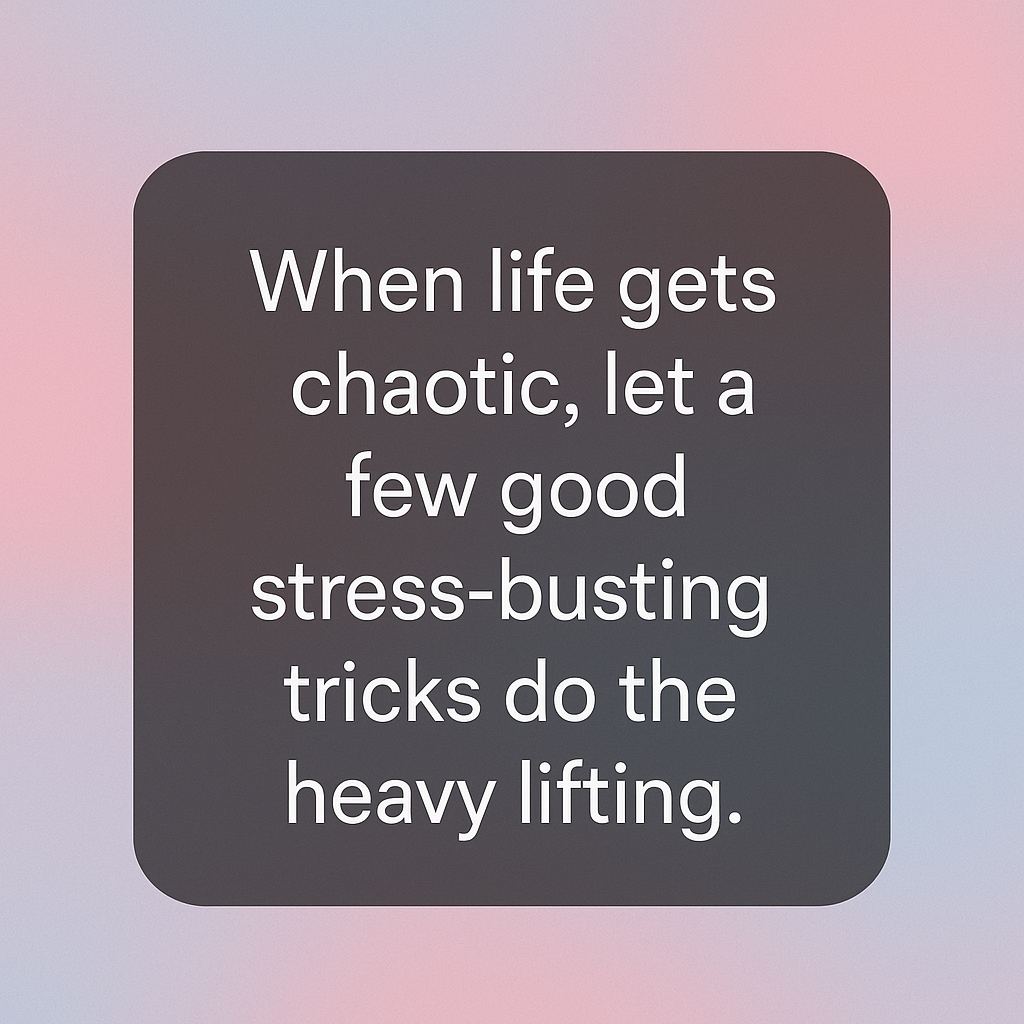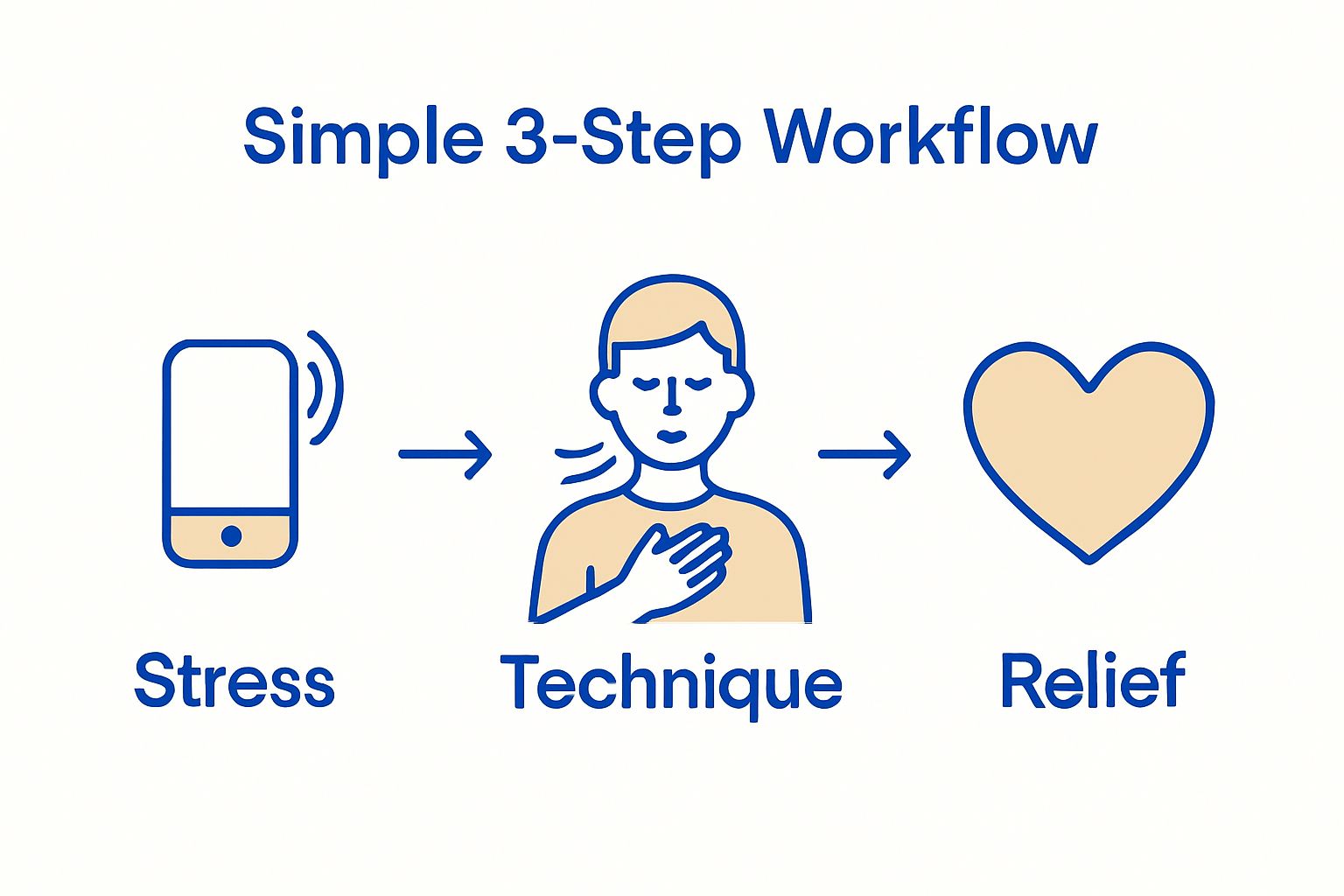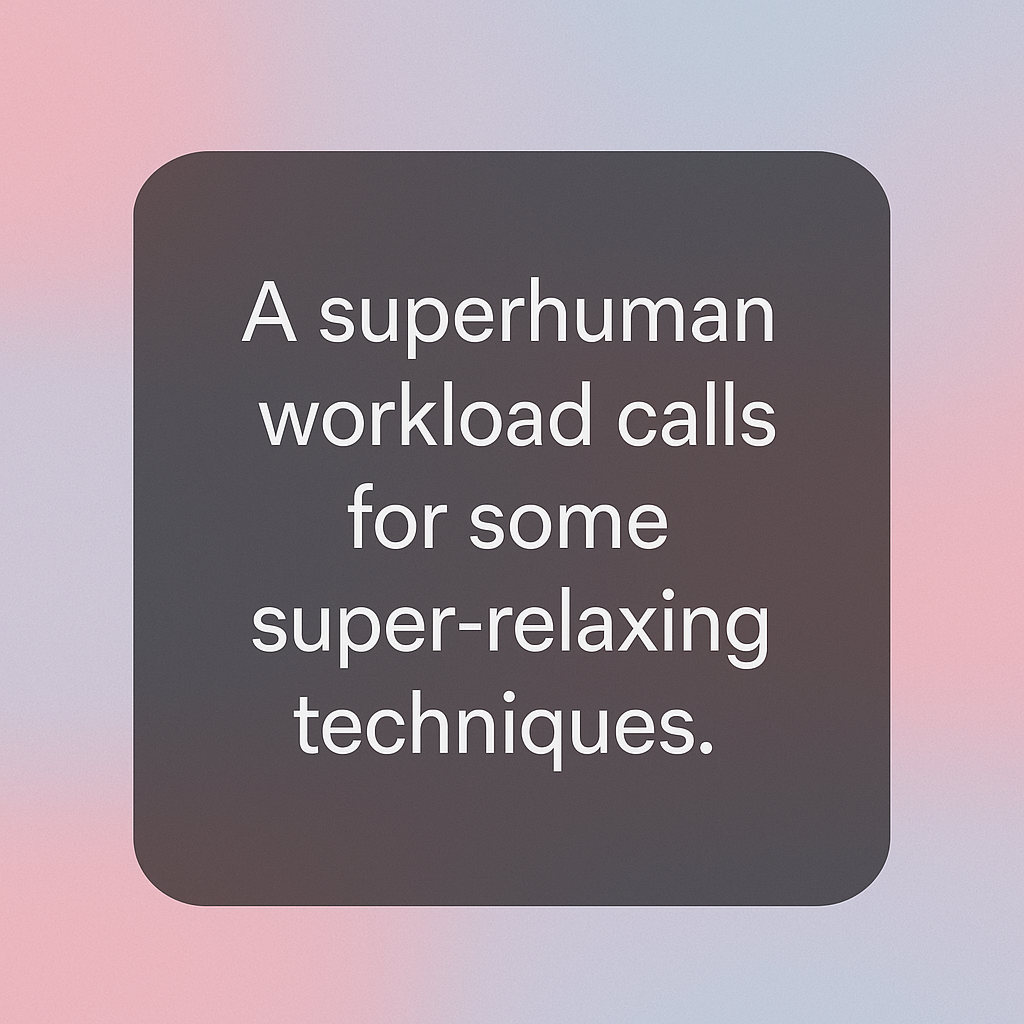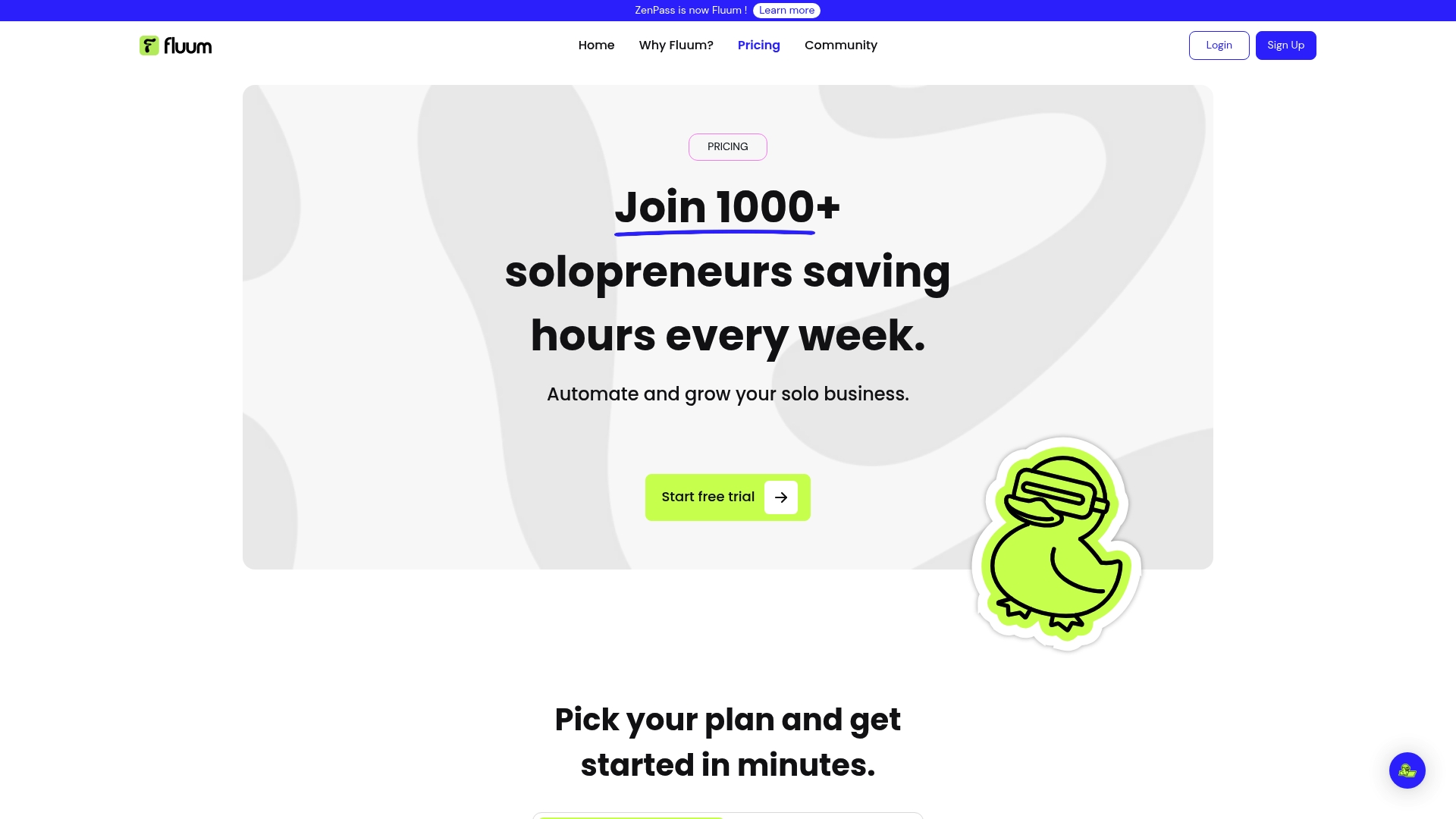
Stress management techniques are so important as work stress creeps in so quietly that many professionals do not notice trouble until it hits hard. Studies show stress is responsible for up to 60 percent of absenteeism and reduced productivity in the workplace. Most people try to fight stress by just working harder, but that often makes things worse. Smart success comes from tracking your stress, breaking the cycle, and making stress management personal.
Table of Contents
- Step 1: Assess Your Current Stress Levels
- Step 2: Identify Stress Triggers And Responses
- Step 3: Create A Personalized Stress Management Plan
- Step 4: Implement Practical Stress-Relief Techniques
- Step 5: Monitor Your Progress And Adjust Strategies
Quick Summary
| Key Point | Explanation |
|---|---|
| 1. Assess Your Stress Levels | Track emotional and physical stress indicators daily to understand your unique stress profile. |
| 2. Identify Specific Stress Triggers | Analyze situations that provoke stress, such as deadlines or workplace dynamics, to manage them better. |
| 3. Create a Personalized Plan | Develop a stress management plan tailored to your work style, integrating prevention and real-time strategies. |
| 4. Implement Practical Stress Relief Techniques | Use quick interventions like diaphragmatic breathing or short movement breaks to counteract stress immediately. |
| 5. Regularly Monitor and Adjust Strategies | Track your stress management progress and be willing to adapt your approach based on effectiveness. |
Step 1: Assess Your Current Stress Levels
Effective stress management begins with honest self-reflection. Understanding your current stress levels is crucial for developing targeted strategies that work for your unique professional circumstances. Professionals often underestimate their stress until it manifests through physical symptoms, decreased productivity, or emotional exhaustion.
To start your stress assessment, create a comprehensive personal stress profile by tracking your emotional and physical responses over a two-week period. Use a simple journal or digital tracking method to document daily stress indicators such as sleep quality, energy levels, emotional reactivity, and physical tension. Pay special attention to patterns that emerge during work hours and high-pressure situations.
The assessment process involves multiple layers of evaluation. Begin by rating your stress on a scale from 1 to 10 each day, noting specific triggers and your physiological responses. Are there consistent patterns around certain work activities, interactions, or times of day? Track elements like muscle tension, heart rate, breathing patterns, and mental clarity. Some professionals find it helpful to use smartphone apps or stress reduction tracking tools to monitor these indicators systematically.
Physical symptoms often reveal more about stress levels than mental assessments alone. Look for signs like frequent headaches, digestive issues, unexplained fatigue, changes in appetite, or disrupted sleep patterns. These bodily signals provide critical insights into your stress landscape. Recognize that stress manifests differently for each person, making personalized tracking essential.
Key verification criteria for a successful stress assessment include:
- Consistent daily documentation of stress levels
- Identification of primary stress triggers
- Recognition of physical and emotional stress responses
- Objective evaluation of work and personal life stress sources
By methodically collecting this data, you will create a foundational understanding of your stress profile. This step prepares you for developing targeted stress management techniques that align with your professional and personal needs. The insights gained here will directly inform the subsequent strategies we will explore in upcoming sections of this guide.
Step 2: Identify Stress Triggers and Responses
After establishing your baseline stress assessment, the next critical step involves pinpointing the specific catalysts that generate stress in your professional environment. Understanding your unique stress triggers transforms abstract anxiety into actionable information. Stress does not emerge randomly but follows predictable patterns unique to each individual.
Careful observation requires creating a detailed mapping of your emotional and physiological responses across different professional scenarios. Start by reviewing your initial stress assessment and examining moments where tension spiked. Was it during client meetings, tight deadlines, financial uncertainties, or interpersonal workplace dynamics? Professional stress typically clusters around performance expectations, communication challenges, and perceived lack of control.
To conduct a comprehensive trigger analysis, categorize your stress responses into distinct zones. Physical responses might include increased heart rate, muscle tension, shallow breathing, or digestive discomfort. Emotional responses could manifest as irritability, overwhelm, sudden mood shifts, or persistent background anxiety. Mental responses often involve racing thoughts, decreased concentration, decision paralysis, or catastrophic thinking patterns.
Implement a systematic tracking method that goes beyond surface observations. Learn more about stress identification techniques by documenting not just when stress occurs, but the precise environmental and psychological conditions surrounding these moments. According to research from the National Institute of Mental Health, understanding these nuanced triggers is fundamental to developing targeted stress management strategies.
Verification criteria for successfully identifying stress triggers include:
- Comprehensive documentation of stress-inducing scenarios
- Clear identification of consistent emotional and physical stress responses
- Recognition of personal vulnerability zones
- Objective mapping of professional stress landscape
By meticulously dissecting your stress triggers, you transform them from mysterious, overwhelming experiences into manageable, predictable phenomena.
Below is a table summarizing common physical, emotional, and mental stress responses alongside typical triggers busy professionals might experience at work.
| Category | Common Triggers | Typical Responses |
|---|---|---|
| Physical | Tight deadlines, client meetings | Muscle tension, headaches, digestive issues |
| Emotional | Interpersonal conflicts | Irritability, overwhelm, mood swings |
| Mental | High workload, lack of control | Racing thoughts, decreased focus, decision paralysis |
| Environmental | Noisy office, constant emails | Fatigue, distraction, anxiety |
| Organizational | Unclear roles, shifting goals | Frustration, demotivation, loss of clarity |
Step 3: Create a Personalized Stress Management Plan
Transforming stress insights into actionable strategies requires a thoughtful, customized approach tailored to your professional lifestyle. A personalized stress management plan is not a generic template but a dynamic blueprint that evolves with your changing work environment. The goal is to develop a flexible yet structured system that proactively addresses your unique stress triggers and supports your overall well-being.
Begin by synthesizing the information gathered from your previous stress assessment and trigger identification. Your plan should incorporate holistic interventions that target physical, emotional, and mental dimensions of stress. Professional success demands integrating stress management techniques seamlessly into your daily workflow, not treating them as separate, disconnected activities.
Design your strategy around three core pillars: preventative techniques, real-time management tools, and recovery mechanisms. Preventative techniques might include structured morning routines, boundary setting with clients, and proactive scheduling that allows buffer time between high-intensity tasks. Real-time management tools could involve breathing exercises, quick mindfulness practices, or structured breaks that reset your mental state during challenging work periods.
According to research from the Mayo Clinic, an effective stress management plan requires personalization and consistent implementation. Consider integrating technology and digital tools that support your stress reduction goals. Explore stress management tools that align with your professional workflow and personal preferences.
Verification criteria for a successful personalized stress management plan include:
- Comprehensive coverage of stress management across physical, emotional, and mental domains
- Clear, actionable strategies for prevention, real-time management, and recovery
- Flexibility to adapt and modify the plan based on ongoing assessment
- Measurable indicators of stress reduction and professional well-being
Remember that your stress management plan is a living document. Regular review and adjustment ensure it remains relevant and effective, transforming stress from an overwhelming challenge into a manageable aspect of your professional journey.
Use the following checklist to ensure your personalized stress management plan addresses all key areas and meets professional effectiveness criteria.
| Verification Area | What to Check For | Completion (Yes/No) |
|---|---|---|
| Physical Techniques Included | Plan covers exercise, breathing, or relaxation | |
| Emotional Strategies Addressed | Emotional triggers and responses considered | |
| Mental Interventions Specified | Techniques for focus and cognitive relief present | |
| Preventative & Real-Time Solutions | Both proactive and immediate-use strategies listed | |
| Flexibility to Adjust Plan | Plan allows reviews and modifications | |
| Measurable Stress Reduction Indicators | Concrete progress metrics identified |
Step 4: Implement Practical Stress-Relief Techniques
Transitioning from understanding stress to actively combating it requires practical, immediately applicable techniques that integrate seamlessly into your professional routine. Effective stress relief is not about dramatic lifestyle overhauls but strategic, micro-interventions that reset your physiological and psychological state.
Quick physiological interventions serve as your first line of defense against escalating stress. Diaphragmatic breathing emerges as a powerful tool that can be practiced anywhere. Spend two to three minutes focusing on deep, controlled breaths that originate from your diaphragm. Inhale slowly through your nose, allowing your abdomen to expand, then exhale gradually through your mouth. This technique signals your nervous system to shift from high-alert stress mode to a calmer state.

Physical movement represents another critical stress management strategy. Professionals often misunderstand exercise as requiring extensive time commitments. In reality, short, intense movement breaks can dramatically reduce stress hormones. Incorporate five to ten-minute movement sessions throughout your workday. These might include standing desk stretches, quick yoga poses, brisk walking, or exploring emotional regulation techniques that combine physical and mental reset mechanisms.
According to research from Harvard Medical School, integrating systematic relaxation techniques can significantly mitigate stress responses. Consider developing a personal stress interruption toolkit that includes multiple quick interventions. This might involve guided meditation apps, progressive muscle relaxation recordings, or preset playlists designed to induce calm.
Verification criteria for successfully implementing stress-relief techniques include:
- Consistent daily practice of at least two different stress management interventions
- Measurable reduction in physiological stress indicators
- Improved ability to recognize and interrupt stress escalation
- Enhanced overall sense of professional and personal well-being
Remember that stress-relief techniques are skills requiring practice and patience. Your ability to manage stress effectively will improve with consistent, intentional application, transforming these strategies from external interventions to intuitive responses.

Step 5: Monitor Your Progress and Adjust Strategies
Successful stress management is not a static destination but a dynamic, evolving journey that requires consistent reflection and strategic adaptation. Progress tracking transforms your stress management approach from a rigid plan into a responsive, intelligent system that grows with your professional needs.
Implement a structured monitoring framework that combines quantitative measurements and qualitative self-assessment. Create a comprehensive tracking system that captures multiple dimensions of your stress experience. Utilize digital tools or a dedicated journal to record not just stress levels, but the effectiveness of specific interventions, your emotional resilience, and subtle shifts in your professional performance and personal well-being.
Establish clear, measurable indicators that reveal the real impact of your stress management strategies. These might include physiological markers like resting heart rate, sleep quality, and energy levels, alongside professional performance metrics such as productivity, decision-making clarity, and interpersonal communication effectiveness. The goal is to develop a holistic understanding of how stress management techniques influence your overall professional ecosystem.
According to research published in the National Institutes of Health, adaptive strategies that respond to changing personal and professional contexts are significantly more effective than rigid, unchanging approaches. Schedule quarterly comprehensive reviews of your stress management plan, treating it as a living document that requires periodic recalibration.
Verification criteria for successful progress monitoring include:
- Consistent and objective tracking of stress management interventions
- Quarterly comprehensive reviews of strategy effectiveness
- Willingness to modify approaches based on empirical self-observations
- Demonstrable improvements in professional performance and personal well-being
Remember that progress is not linear. Some strategies will work brilliantly in certain phases of your professional journey, while others might require refinement or complete replacement. Your ability to remain flexible, curious, and compassionate toward your own growth process is the ultimate key to sustainable stress management.
Simplify Stress Management for Your Solo Business
Feeling overwhelmed trying to juggle stress management alongside daily business operations? As the article highlights, busy professionals like you need a personalized plan, real-time relief techniques, and streamlined routines to thrive. Yet when every task—booking, payments, marketing—demands your attention, implementing effective strategies often feels impossible.

What if you could eliminate much of that mental clutter and let automation support your stress management journey? Fluum.ai was built for solopreneurs and freelancers seeking simplicity and control. Our platform helps you focus on well-being by automating client management, sales funnels, and scheduling so you have more time for stress relief techniques and self-care. Explore our all-in-one automation tools and see how a user-friendly, AI-powered co-founder can make your days less hectic. Try fluum.ai today to reclaim your energy and keep your business running smoothly, exactly when you need it most.
Frequently Asked Questions
What are the first steps in assessing my current stress levels?
Effective stress management begins with self-reflection. Start by creating a personal stress profile over two weeks, tracking indicators like sleep quality, energy levels, and emotional reactivity to understand your stress landscape better.
How can I identify specific stress triggers in my professional life?
To identify stress triggers, examine your initial stress assessment for patterns. Focus on moments of heightened stress, such as client meetings or tight deadlines, and document your physical, emotional, and mental responses during these times.
What should be included in a personalized stress management plan?
A personalized stress management plan should encompass preventative techniques, real-time management tools, and recovery mechanisms tailored to your unique stress triggers. It should address physical, emotional, and mental aspects of stress.
What are some practical stress-relief techniques I can implement at work?
Consider integrating quick interventions like diaphragmatic breathing and short movement breaks. These strategies can help reset your physiological and psychological state, making it easier to manage stress effectively.
Recommended
- Fluum | How to Onboard Clients Effectively for Lasting Success
- Fluum | What is Nervous System Regulation Techniques
- Fluum | Master Managing Multiple Projects for Success
- Fluum | Build Your Brand with a Branding Builder in 2025
- Fluum | 7 Customer Retention Examples to Boost Your Business
- Stress Management for Men: Master Your Emotions Today – Mastering Conflict
- Stressmanagement-Methoden » Definition und Tipps ✓



